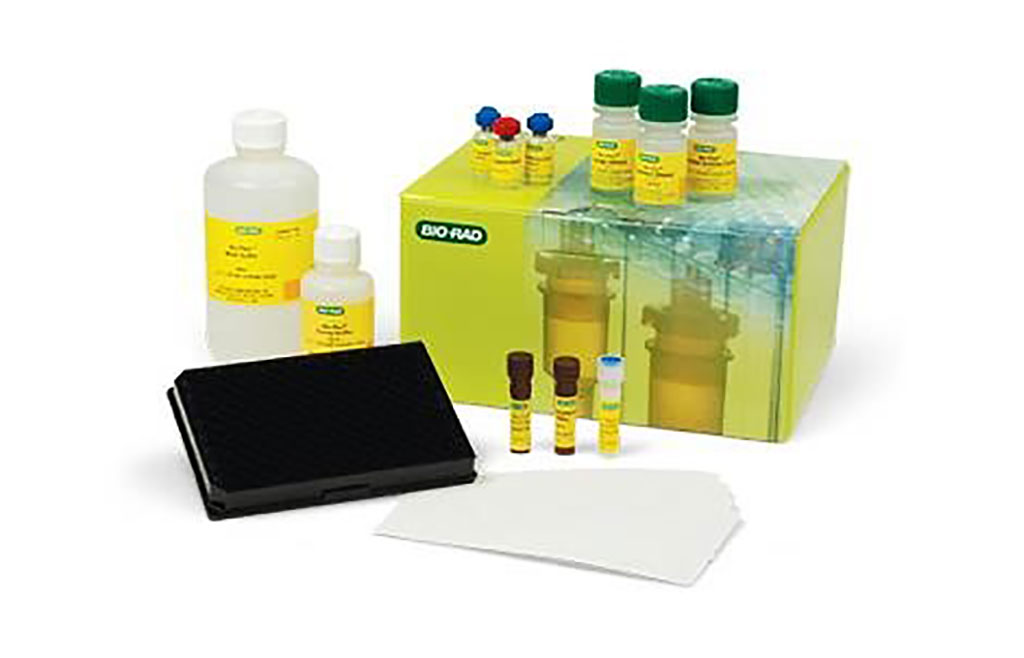Cytokine Profiles Characterized in Primary Sjögren´s Syndrome Patients
By LabMedica International staff writers
Posted on 02 Dec 2020
Primary Sjögren's syndrome (pSS) is an autoimmune disease characterized by a lymphocytic infiltrate in salivary glands driving to epithelial damage. The pSS patients present heterogenic clinical and serological characteristics.Posted on 02 Dec 2020
Cytokines play an essential role in pSS pathogenesis, mediating cell response and promoting tissue damage. Th1, Th2, and Th17 cells and their cytokine profiles have been implied in the pathogenesis of pSS as well as reported in saliva, serum, and labial salivary gland (LSG), with different results.

Image: The Bio-Plex Pro Human Th17 Cytokine Panel enables measurement of analytes in diverse matrices such as serum, plasma, and cell culture supernatants (Photo courtesy of Bio-Rad).
Biomedical Scientists from the Universidad de Guadalajara (Guadalajara, México) included in a study 99 pSS patients, diagnosed by the 2016 ACR/EULAR classification criteria, and 76 control subjects (CS). Ninety‐eight percent of the pSS patients had a positive biopsy of labial minor salivary glands (focus score ≥ 1 foci/4 mm2).
The team collected samples in tubes containing spray‐coated silica and a polymer gel were used for serum separation (BD Vacutainer SST, Becton, Dickinson and Company, Franklin Lakes, NJ, USA). Cytokine quantification (IL‐1β, IL‐4, IL‐6, IL‐10, IL‐17A, IL‐17F, IL‐21, IL‐22, IL‐23, IL‐25, IL‐31, IL‐33, IFN‐γ, and TNF‐α) was performed by Bio‐Plex Pro Human Th17 Cytokine Panel 15‐Plex kit and analyzed using a Bio‐Plex MAGPIX Multiplex Reader (Bio‐Rad Laboratories, Inc, Hercules CA, USA).
The investigators reported that higher IFN‐γ, IL‐17F, IL‐21, IL‐23, IL‐4, and IL‐31 levels were observed in pSS patients in comparison with control subjects. Principal component analysis (PCA) showed three groups. The severe group was characterized by higher cytokine concentrations as well as an increase in clinical parameters such as antibody levels, damage index score, and others. The moderate group presented intermediate severity; meanwhile, the mild group presented the lowest severity. The population showed low positivity to anti‐Ro (13.3%) and anti‐La (11.1%) antibodies.
The authors concluded that cluster analysis revealed three groups that were different in cytokine levels and clinical parameters in which the mild group was defined by lower severity, the moderate group with intermediate severity, and the severe group with higher severity. This analysis could help sub-classify the primary Sjögren’s syndrome patients for a better understanding of the clinical phenotype that impacts the treatment approach. The study was published on October 17, 2020 in the Journal of Clinical Laboratory Analysis.
Related Links:
Universidad de Guadalajara
Becton, Dickinson and Company
Bio‐Rad Laboratories













